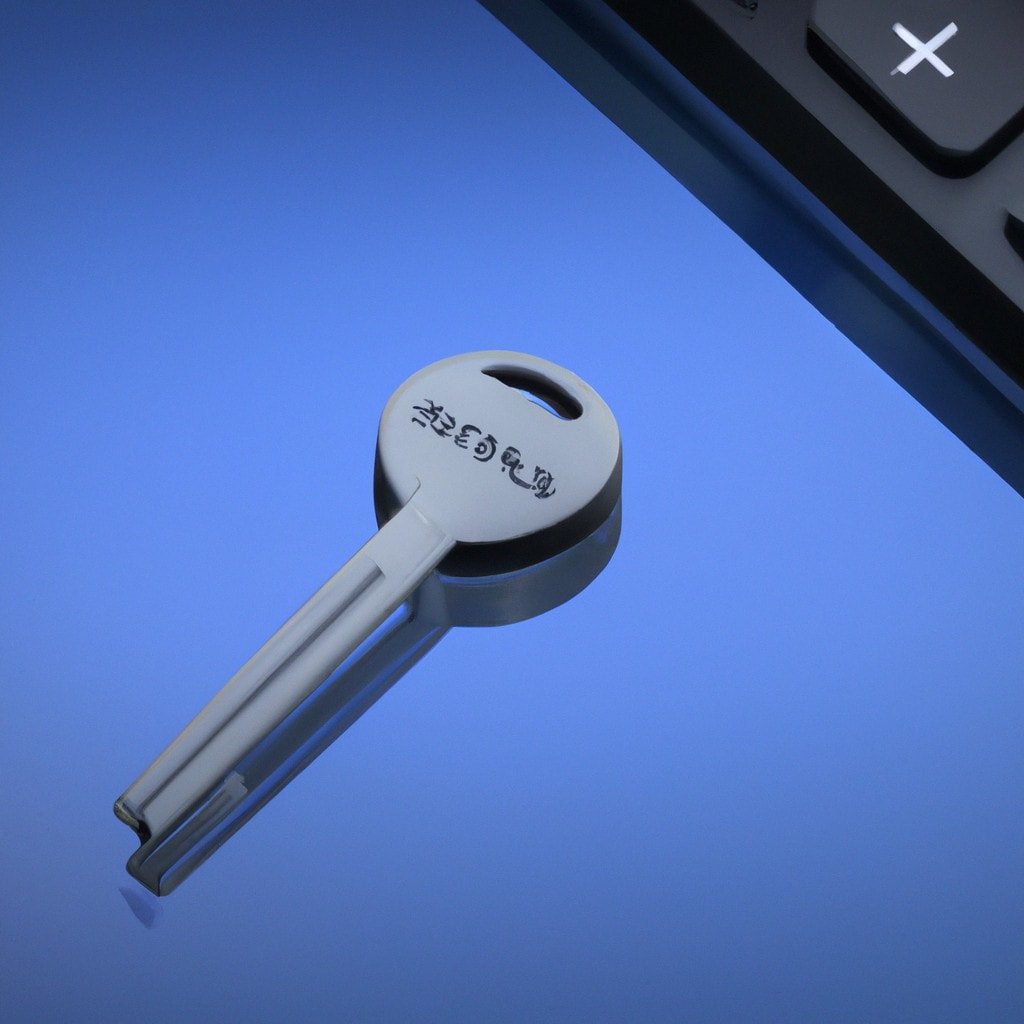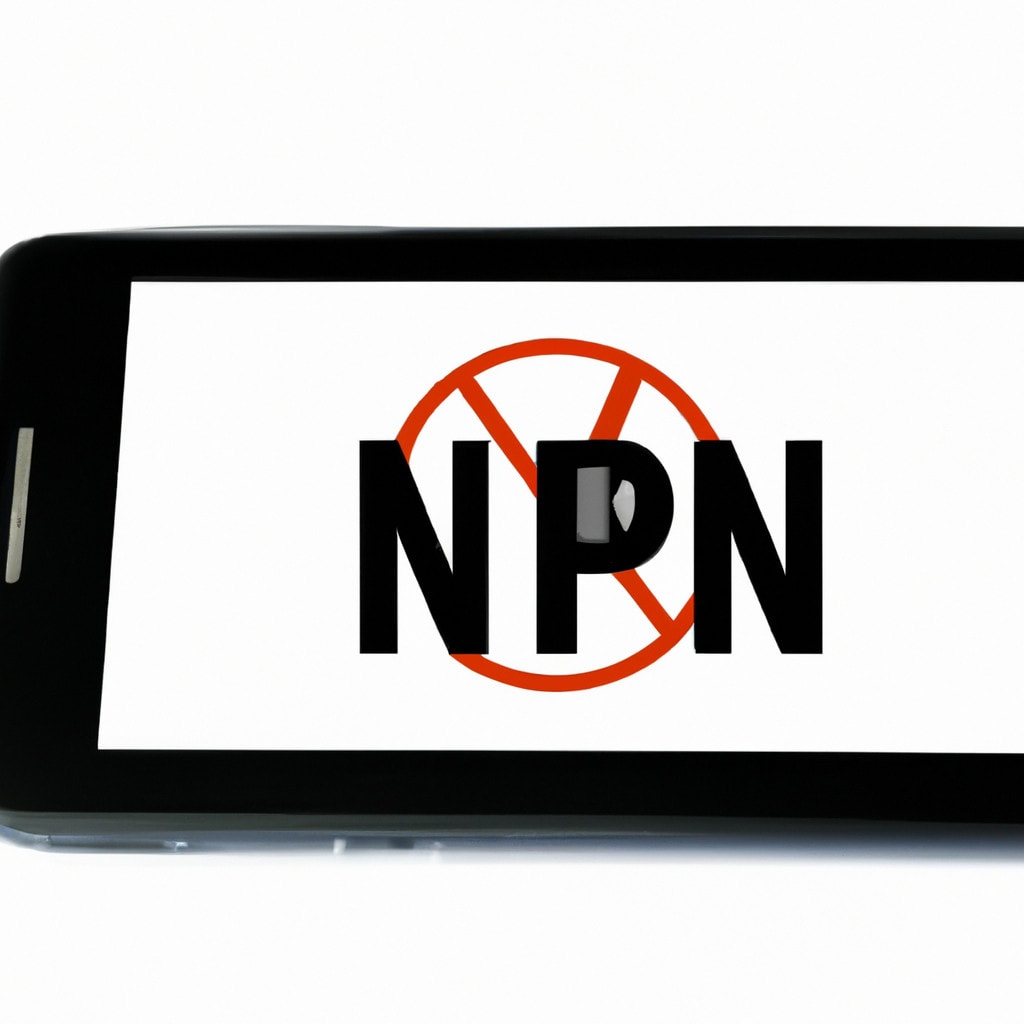Can I Use a VPN with Xfinity? A Comprehensive Guide for Expert Users
Have you ever wondered if you can enhance your online privacy and security using a VPN with Xfinity? In today’s interconnected world, the demand for more advanced cybersecurity measures is steadily increasing. This article will unravel the complexities of using a VPN with Xfinity while addressing questions that expert users may have.
As an expert engineer in software, I will provide insights on this topic by focusing on the technical aspects, practical examples, and expert recommendations. So, let’s dive right in!
# Table of Contents
1. Understanding VPNs and Xfinity
2. Compatibility of VPNs with Xfinity
3. Benefits of Using a VPN with Xfinity
4. Technical Considerations for VPN Setup
5. Recommended VPN Solutions for Expert Users
6. How to Set Up a VPN with Xfinity
7. Troubleshooting Tips and FAQs
8. In Conclusion
1. Understanding VPNs and Xfinity
Before discussing the compatibility of VPNs with Xfinity, it is crucial to understand the core functions of a VPN and how it operates alongside Xfinity services.
Virtual Private Network (VPN): A VPN is a security and privacy tool that encrypts the user’s internet connection and routes it through a secure tunnel to a remote server. This process masks the user’s IP address and prevents third parties from monitoring their online activities.
Xfinity: Xfinity, owned by Comcast Cable Communications, is a popular internet service provider (ISP) in the United States. It offers high-speed broadband connections, television services, home security, and phone services.
2. Compatibility of VPNs with Xfinity
To answer the primary query “Can I use a VPN with Xfinity?”— the answer is a resounding yes. You can use a VPN with Xfinity, and it is highly recommended to do so for various reasons.
There are no restrictions on using a VPN with Xfinity, and setting up a VPN can be accomplished with ease. Most VPN providers offer compatibility with various devices and platforms, making it a seamless experience for expert users.
3. Benefits of Using a VPN with Xfinity
Using a VPN with your Xfinity connection offers several advantages, including:
Enhanced Privacy: By encrypting your internet connection and masking your IP address, a VPN prevents ISPs, hackers, and other third parties from monitoring your online activities.
Access Geo-Restricted Content: A VPN allows you to bypass geo-restrictions imposed by content providers, enabling you to access blocked websites, streaming services, and other online platforms that may not be available in your region.
Throttling Prevention: ISPs, such as Xfinity, might throttle your bandwidth based on your online activities. A VPN helps avoid throttling by hiding your activities from your ISP.
4. Technical Considerations for VPN Setup
When setting up a VPN with Xfinity, there are several critical technical factors to consider:
Protocol Selection: VPN protocols, such as OpenVPN, IKEv2, WireGuard, and L2TP/IPsec, offer different levels of security and performance. It is vital to choose a protocol that aligns with your security requirements and device compatibility.
Encryption Level: Higher encryption levels, such as AES-256, provide greater security but may affect connection speeds marginally. As an expert user, you should be aware of this trade-off when selecting the encryption level.
Server Locations: Opt for a VPN provider with a wide range of server locations, which enables you to better access regional content and improve connection speeds.
5. Recommended VPN Solutions for Expert Users
Here are some top-tier VPN services that cater to the needs of expert users, ensuring compatibility and optimal performance with Xfinity:
1. ExpressVPN: Known for its high-speed connections and robust security features, ExpressVPN is a popular choice among expert users. It supports OpenVPN, IKEv2, and Lightway (a proprietary protocol) and offers over 3,000 servers in 94 countries.
2. NordVPN: Featuring advanced security features like Double VPN and CyberSec (ad and malware blocker), NordVPN is an industry-leading service. The provider has over 5,400 servers across 59 countries and supports OpenVPN, IKEv2, and WireGuard (NordLynx).
3. CyberGhost: CyberGhost provides a user-friendly interface along with strong security features like AES-256 encryption and a strict no-logs policy. The service has a global server network of over 6,500 servers across 89 countries and supports OpenVPN, IKEv2, and L2TP/IPsec.
6. How to Set Up a VPN with Xfinity
Setting up a VPN with Xfinity involves the following steps:
1. Select a VPN Provider: Choose a trusted VPN service that caters to your technical requirements and offers compatibility with Xfinity.
2. Create an Account and Subscribe: Sign up for the VPN service, and purchase a subscription plan based on your preferences.
3. Download and Install the VPN App: Install the VPN application on your devices, such as computers, smartphones, or tablets.
4. Configure VPN Settings: Launch the app, sign in with your credentials, and configure the settings per your technical preferences, such as protocol and encryption level.
5. Connect to a VPN Server: Choose a server location from the list, and establish a connection. Your internet traffic is now securely encrypted and routed through the VPN tunnel.
7. Troubleshooting Tips and FAQs
In case of connectivity issues, try the following troubleshooting tips:
1. Change the VPN server location.
2. Switch the VPN protocol.
3. Check your firewall settings and ensure the VPN app is allowed to pass through.
Some frequently asked questions are:
Q: Does using a VPN affect my internet speed?
A: There may be a slight reduction due to encryption and routing, but selecting a server close to your location can minimize this impact.
Q: Can I use a VPN on multiple devices?
A: Yes, most VPN providers allow multiple simultaneous connections, enabling you to use a VPN on various devices at the same time.
8. In Conclusion
The integration of a VPN with Xfinity offers numerous benefits, including enhanced privacy, access to geo-restricted content, and prevention of bandwidth throttling. As an expert user, you should consider the technical aspects of a VPN, such as protocol selection and encryption level, while setting up a VPN with Xfinity. By choosing a trusted VPN service that caters to your needs, you can significantly improve your online security and privacy.
How to get Faster Internet speed when you change a simple setting
Faster Internet for FREE in 30 seconds – No… Seriously
Will a VPN work on Xfinity?
Yes, a VPN will work on Xfinity as long as it’s set up correctly. Xfinity, being a large internet service provider, supports the use of VPNs on their network. Using a VPN with your Xfinity connection can help you enhance your privacy, security, and even access geo-restricted content.
To get started, you’ll need to choose a reputable VPN provider that is compatible with Xfinity’s services. Once you have selected and signed up for a VPN service, you can follow the provider’s instructions to install and configure the VPN software on your device.
After setting up the VPN, you should be able to connect to the internet through Xfinity while enjoying the benefits of a more secure and private connection. Keep in mind that while using a VPN, your connection speed may be affected, but this shouldn’t be significant if you’re using a reliable VPN provider.
In conclusion, a VPN works perfectly fine with Xfinity, allowing you to maintain your privacy, improve security, and unlock geo-restricted content. Just make sure to select a trustworthy provider and follow the appropriate setup instructions for seamless integration.
How do I enable VPN on Xfinity?
To enable a VPN on Xfinity, you’ll need to follow these steps:
1. Choose a VPN service: First, select a reliable and reputable VPN service provider. Some popular options include ExpressVPN, NordVPN, and CyberGhost VPN. Make sure that the VPN you choose is compatible with Xfinity devices and provides adequate security features.
2. Sign up for the VPN: Visit the VPN service provider’s website and sign up for a plan that fits your needs. You may need to provide your email address and payment information. Most VPNs offer different subscription plans, so choose one that suits your requirements.
3. Install the VPN app: Download and install the VPN application for your device. Most VPN services offer apps for various operating systems such as Windows, macOS, iOS, and Android. Some VPNs also have browser extensions for Chrome or Firefox.
4. Configure the VPN: Open the VPN app and sign in using your account credentials provided during the sign-up process. Once logged in, you might need to configure the VPN based on your preferences. This may include selecting a server location, choosing a protocol, and enabling features like a kill switch or split tunneling.
5. Connect to the VPN: Select a server location and click “Connect” or a similar button to establish a secure VPN connection. Once connected, your internet traffic will be routed through an encrypted tunnel, enhancing your privacy and security while using Xfinity.
6. Verify your connection: To ensure that your VPN is working correctly, you can visit a website like ipleak.net or whatismyip.com to verify that your IP address and location have changed.
Remember that using a VPN with Xfinity may affect your internet speed, especially if the chosen server is far from your actual location. However, the benefits of a VPN, such as improved privacy and access to geo-restricted content, often outweigh this trade-off.
How do I install a VPN on my Xfinity router?
Installing a VPN on your Xfinity router can help enhance your online security and privacy. To install a VPN on your Xfinity router, follow these steps:
1. Choose a compatible VPN: Ensure the VPN you choose is compatible with your Xfinity router, as not all VPNs may work well with this router.
2. Sign up for a VPN service: Purchase a subscription plan from your chosen VPN provider. Make sure to keep your login credentials safe.
3. Access your router admin panel: Open your web browser and enter the router’s IP address (usually 10.0.0.1 for Xfinity) in the address bar. Enter your username and password to log into the admin panel.
4. Navigate to the VPN settings: Once logged in, find the VPN settings in the router’s admin panel. This may vary depending on the router model.
5. Configure the VPN: Enter the required VPN settings, such as the server address, username, and password provided by your VPN service. Some routers may also require you to upload a configuration file, which can be obtained from the VPN provider.
6. Save and apply settings: After entering the necessary information, save your settings and apply any changes. The router will restart, and the VPN connection should be successfully established.
7. Check the VPN connection: To ensure the VPN is working correctly, visit a website that displays your IP address or use a VPN-checking tool to confirm that your device is connected to the VPN server.
Note: Some Xfinity routers may not support VPN configurations directly. In such cases, you may have to flash your router with custom firmware like DD-WRT or purchase a VPN-compatible router. Always make sure to follow your router’s documentation and guidelines when making changes to its settings.
Can a VPN bypass Xfinity?
Yes, a VPN can bypass Xfinity restrictions and provide you with unrestricted access to the internet. Xfinity, like many other internet service providers (ISPs), may block or throttle your connection to certain websites or services. By using a VPN, your internet traffic is encrypted and routed through a secure server, effectively masking your online activities and allowing you to bypass any restrictions set by Xfinity.
A VPN also helps you maintain your privacy by hiding your IP address and preventing Xfinity from monitoring your online activities. This is especially important if you want to access geo-restricted content or protect your personal information from potential hackers on public Wi-Fi networks.
However, it is important to choose a reliable and trustworthy VPN provider that offers fast speeds, strong encryption, and a strict no-logging policy. Keep in mind that using a VPN might be against Xfinity’s terms of service, so use it at your own risk.
What is the best VPN to watch Xfinity?
The best VPN to watch Xfinity is ExpressVPN. It offers a combination of fast speeds, reliable connections, and robust security features that make it ideal for streaming Xfinity content. ExpressVPN also has a large server network, which means you can easily bypass geo-restrictions and access all your favorite shows and movies. Other top VPN options include NordVPN and CyberGhost VPN.
Can I use Nord VPN with Xfinity on?
Yes, you can use Nord VPN with Xfinity to enhance your online privacy and security. Nord VPN is a reputable Virtual Private Network service that encrypts your Internet connection, hides your IP address, and enables you to bypass geographical restrictions.
When using Nord VPN with Xfinity, you can connect to one of their numerous servers worldwide and enjoy your favorite content without worrying about data throttling or any potential privacy issues.
To get started with Nord VPN on Xfinity, follow these simple steps:
1. Sign up for a Nord VPN account.
2. Download and install the Nord VPN app on your preferred device.
3. Open the Nord VPN app and log in using your account credentials.
4. Choose a server location by browsing the list or using the quick-connect option.
5. Once connected, your Internet traffic will be encrypted, and your online activities will remain private.
Remember that using a VPN may slightly affect your connection speed; however, Nord VPN offers fast servers and unlimited bandwidth to minimize this impact. Overall, combining Nord VPN and Xfinity ensures a secure and unrestricted Internet experience.
Is it possible to set up a VPN while using Xfinity as my Internet Service Provider?
Yes, it is possible to set up a VPN while using Xfinity as your Internet Service Provider (ISP). Xfinity, like most ISPs, does not prevent users from using a Virtual Private Network (VPN), which can help enhance your privacy and security while browsing the internet.
To set up a VPN with Xfinity, you can follow these general steps:
1. Choose a reputable VPN provider that meets your needs and subscribe to their service.
2. Download and install the VPN client or app associated with your chosen provider on your devices.
3. Sign in to the VPN client using the credentials provided by your VPN provider.
4. Choose a VPN server location that you want to connect to, and then click the “connect” button on your VPN client.
5. Your connection should now be routed through the VPN, providing you with a more secure and private browsing experience.
Keep in mind that using a VPN may impact your connection speed, but it provides enhanced privacy and security while using the internet through your Xfinity service.
Can using a VPN with Xfinity improve my online privacy and security?
Yes, using a VPN with Xfinity can significantly improve your online privacy and security. A Virtual Private Network (VPN) is a service that encrypts your internet connection and hides your IP address, making your online activities more private and secure.
When you use a VPN with Xfinity, or any other internet service provider (ISP), it creates an encrypted tunnel between your device and the VPN server. This encryption prevents ISPs, hackers, and other third parties from seeing or tracking your online activities.
Moreover, a VPN conceals your IP address, which provides an additional layer of privacy. With your IP address hidden, it becomes difficult for anyone to identify your actual location or track your browsing habits.
In summary, utilizing a VPN with Xfinity can increase your online security by protecting your data from cyber threats and improving your privacy by preventing web tracking. It’s an important tool for anyone concerned about their digital safety and privacy.
Are there any compatibility issues, limitations, or potential speed reductions when using a VPN with Xfinity?
When using a VPN with Xfinity, there may be a few compatibility issues, limitations, and potential speed reductions. Although VPNs can offer several benefits, such as enhanced security, privacy, and the ability to bypass geolocation restrictions, it’s essential to consider these potential drawbacks.
1. Compatibility issues: Some VPNs may not be compatible with all devices, including Xfinity routers or gateways. It’s crucial to verify if your chosen VPN supports your specific device and platform.
2. Speed reductions: VPN connections can sometimes result in slower internet speeds. This happens because your data must pass through an encrypted tunnel and might need to travel longer distances to reach the VPN server. Depending on the server’s location and capacity, this may cause noticeable delays when browsing, streaming, or gaming.
3. Limitations: Some VPNs may limit their users’ data usage, bandwidth, or the number of connected devices. These restrictions can impact your overall experience when using a VPN with Xfinity. Make sure to choose a VPN plan that suits your needs and requirements without compromising performance.
4. Blocked VPN protocols: Xfinity may block specific VPN protocols, like PPTP, due to security concerns. This could prevent some VPN services from functioning correctly over your connection. Opt for VPN providers that offer multiple protocol options, like OpenVPN or IKEv2, to avoid such issues.
To overcome these challenges, it’s essential to choose a reputable and reliable VPN provider that offers high-speed servers, robust encryption, compatibility with various devices and platforms, and no limitations on bandwidth or device connections.





